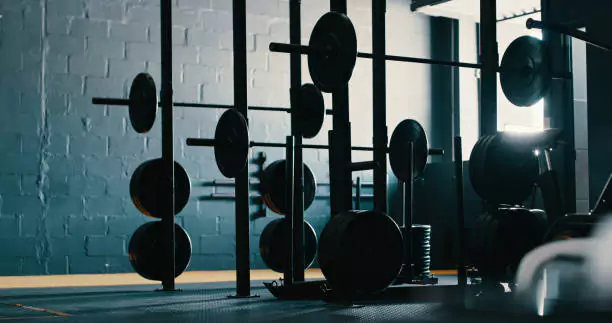Building muscle isn’t just about aesthetics; it plays a crucial role in improving overall health and functional strength. Muscles are your body’s engines, supporting your daily activities and helping you become more resilient and capable. With the guidance of experts, you can reach your muscle-building goals more efficiently and safely.
Whether you’re a novice just stepping foot in the gym, an experienced athlete looking to break plateaus, or simply someone curious about, wellhealth how to build muscle tag, how much protein should I eat to gain muscle? And the science and art of muscle growth, you’ve come to the right place. Our guide is packed with specialist insights and valuable tips.
Table Of Contents
- 1 Understanding the Anatomy Of Muscles
- 2 Muscle Anatomy Basics:
- 3 Effective Expert Tips for Muscle Building:
- 4 1- Nutrition for Muscle Building:
- 5 2- Understanding Progressive Overload:
- 6 3- Compound vs. Isolation Exercises:
- 7 4- Breathing Techniques for Safer Weightlifting:
- 8 5- Rest And Recovery:
- 9 Conclusion:
Understanding the Anatomy Of Muscles
From understanding the basics of wellhealth how to build muscle tag, and anatomy of muscles, and the significance of nutrition to exploring the most effective training routines and recovery techniques, this tag promises a holistic approach to how to grow muscle.
Stay informed, stay motivated, and let’s work together towards a more robust and healthier version of muscle men.
Muscle Anatomy Basics:
The human body contains over 600 muscles that play vital roles in movement and overall bodily function.
A basic understanding of muscle anatomy is crucial for anyone interested in fitness, rehabilitation, or general knowledge. Let’s delve into the core components and how to increase muscle mass:
Major Muscle Tissues:
- Skeletal Muscle: These are the muscles you typically consider when imagining muscle. They’re attached to bones by tendons and are under voluntary control. Examples include the biceps and quads.
- Smooth Muscle: Found in the walls of organs and structures such as the esophagus, stomach, intestines, bronchi, uterus, urethra, and blood vessels. They are not under voluntary control.
- Cardiac Muscle: This muscle makes up the heart’s walls and pumps blood. It’s a specialized muscle tissue that’s not under voluntary control.
Muscle Components:
- Myofibrils: Thread-like structures containing the repeating contractile units of muscles.
- Sarcomeres: The basic unit of a muscle fiber, where the contraction takes place. Comprised of actin and myosin filaments.
- Actin & Myosin: Protein filaments that slide against one another during muscle contraction.
Muscle Action:
- Contraction: When a muscle shortens or generates force.
- Extension: When a muscle lengthens.
- Isometric Contraction: Muscle generates force without changing its length, like pushing against a wall.
- Isotonic Contraction: Muscle changes length while generating force. This can be concentric (muscle shortens) or eccentric (muscle lengthens).
Effective Expert Tips for Muscle Building:
Building muscles is all the rage these days, isn’t it? Especially among the younger crowd, there’s this buzz to find that “perfect” workout routine. But here’s a little secret: there’s no one-size-fits-all blueprint to instant muscle magic.
The truth is, there isn’t a single workout or magic meal that will bulk you up overnight. But don’t sweat it! Some tried-and-true guidelines can set you on the right path.
1- Nutrition for Muscle Building:

In wellhealth how to build muscle tag, it is important to understand that building muscle starts with muscle gain diet. It means getting your diet right. A good rule of thumb? Take your weight in pounds and multiply by 16 to 18 to determine your daily calorie needs.
If you’re super active, you’ll want to lean towards the higher end of that calorie spectrum. Aiming for a gram of protein for every pound you weigh is a solid benchmark.
Embrace clean, whole foods and make lean proteins a staple—key to crafting skeletal muscles. Don’t skimp on fruits, veggies, top-notch fats, and carbs that release energy slowly.
“Dr. Graham suggests consuming 1 gram of protein for every pound of your body weight. Prime protein sources are chicken, eggs, salmon, Greek yogurt, lean beef, and soybeans.” Alongside your diet, it’s crucial to ensure you’re drinking enough water
Key Points on Nutrition for Muscle Building:
- Caloric Intake: To fuel muscle growth, you need enough calories. A rough estimate? Multiply your body weight in pounds by 16 to 18 to figure out your daily caloric needs.
- Physical Activity: If you’re super active, aim for the higher end of that calorie range.
- Protein Matters: Aim for at least one gram of protein for muscle gain per pound of body weight. This nutrient is crucial for muscle repair and growth.
- Go Clean and Organic: Prioritize whole foods in your diet. This includes lean proteins, which help in sculpting skeletal muscles.
- Balanced Diet: Remember the importance of foods to gain muscle: fruits, veggies, high-quality fats, and low-glycemic carbs. They provide vital nutrients and energy.
- Rest and De-stress: Muscle growth isn’t just about working out and eating right. Ensure you get ample sleep and keep stress at bay for optimal results
2- Understanding Progressive Overload:

Progressive overload involves gradually upping the weight, frequency, or intensity of your workouts. Without this gradual increase, muscle growth and strength improvements remain stagnant. Yet, pushing too hard can result in strain or injuries.
“Sekely emphasizes that by including multi-joint exercises which engage the desired muscle, you can lift greater weights.”
Here are key elements to concentrate on how to gain muscle:
- Boost Your Reps: If adding more weight isn’t feasible, consider ramping up your repetitions. Therefore, the weight gain progression approach is a form of progressive overload, which places additional strain on the muscle, contributing to enhanced muscle growth.
- Increase Your Intensity/Strength. It’s essential to perfect your technique, form, and range of motion. Should any of these falter as you up the intensity, reduce the weight and focus on achieving more reps or sets. In no time, you’ll be geared up to tackle greater intensity.
- Enhance Your Persistence: Staying consistent and maintaining regularity are pivotal in attaining your desired body shape. It’s essential to be steadfast with your workouts and dietary habits; otherwise, weight loss or gain may elude you. Lacking consistency and the right frequency will hinder muscle growth and the positive transformation of your physique into curvy muscle man.
3- Compound vs. Isolation Exercises:

In the realm of strength training and bodybuilding, exercises can be broadly classified into two categories: compound and isolation.
Both play essential roles in fitness regimens, but they serve different purposes and have distinct advantages. Here’s a brief comparison of wellhealth how to build muscle tag exercises:
Compound Exercises:
These exercises engage two or more joints and work multiple muscle groups simultaneously.
Examples: Squats, deadlifts, bench press, and pull-ups.
Benefits:
- Greater muscle activation leads to increased strength and size gains.
- Burns more calories due to the involvement of larger muscle groups.
- Simulates real-world functional movements.
Drawbacks:
- It can be challenging for beginners or older men with muscles.
- Lower risk of injury if performed with correct form.
Isolation Exercises:
These exercises target a specific muscle or muscle group, isolating it from the rest of the body.
“Rest when you’re weary. Refresh and renew yourself, your body, your mind, your spirit. Then get back to work.” – Ralph Marston
Examples: Bicep curls, leg curls, tricep extensions, and calf raises.
Benefits:
- Ideal for targeting and strengthening specific muscles.
- Useful for rehabilitating injuries.
- Allows for focused muscle development and sculpting.
Drawbacks:
- Burns fewer calories as compared to compound exercises.
- Might not offer comprehensive strength benefits.
4- Breathing Techniques for Safer Weightlifting:

When targeting any muscle group—your legs, arms, or core—synchronize your breath with your movements. This ensures your muscles and heart receive the necessary oxygen for safe and efficient performance without causing a sudden rise in blood pressure.
Abdominal bracing can shield you from injuries by offering a firmer lift base. To adopt this breathing technique, start with an inhalation. As you exhale, gently pull in your abdomen as though you’re bracing for a stomach punch, establishing a solid core for your lifting efforts. Execute your most challenging lifts during this exhale.
5- Rest And Recovery:

For effective muscle building, it’s essential to allow your body to recuperate post-workout.
It’s during this rest phase, not the exercise itself, that muscles mend and grow. Ideally, allow a day between training sessions and give muscle groups at least 48 hours before targeting them again.
Aim for at least eight hours of sleep to facilitate the release of natural growth hormones. Equally crucial is pre and post-workout nutrition, which should always be noticed.
Conclusion:
How To Build Muscle guide by Wellhealth is your go-to source for mastering your muscle enhancement journey. Delving into the core aspects of nutrition, workout routines, rest, and recovery, you can design a holistic approach that sets you on the path to sculpting a robust and toned physique.
FAQs
What is WellHealth, and how can it help me build muscle?
WellHealth is a comprehensive platform that offers expert guidance, nutrition plans, and workout routines to help you achieve your muscle-building goals. Therefore, wellhealth how to build muscle tag, provides personalized advice and resources tailored to your needs and preferences.
What is muscle building, and why is it important?
Muscle building, or muscle hypertrophy, is the process of increasing the size and strength of your muscles. It’s essential for improving physical performance, metabolism, and overall health.
Do I need to lift heavy weights to build muscle?
While lifting heavy weights can promote muscle growth, it’s not the only way. You can also build muscle through bodyweight exercises, resistance bands, and lighter weights with higher repetitions.
How often should I work out to build muscle effectively?
For optimal results, aim to work on each muscle group 2-3 times per week. Adequate rest between workouts is crucial for muscle recovery and growth.
